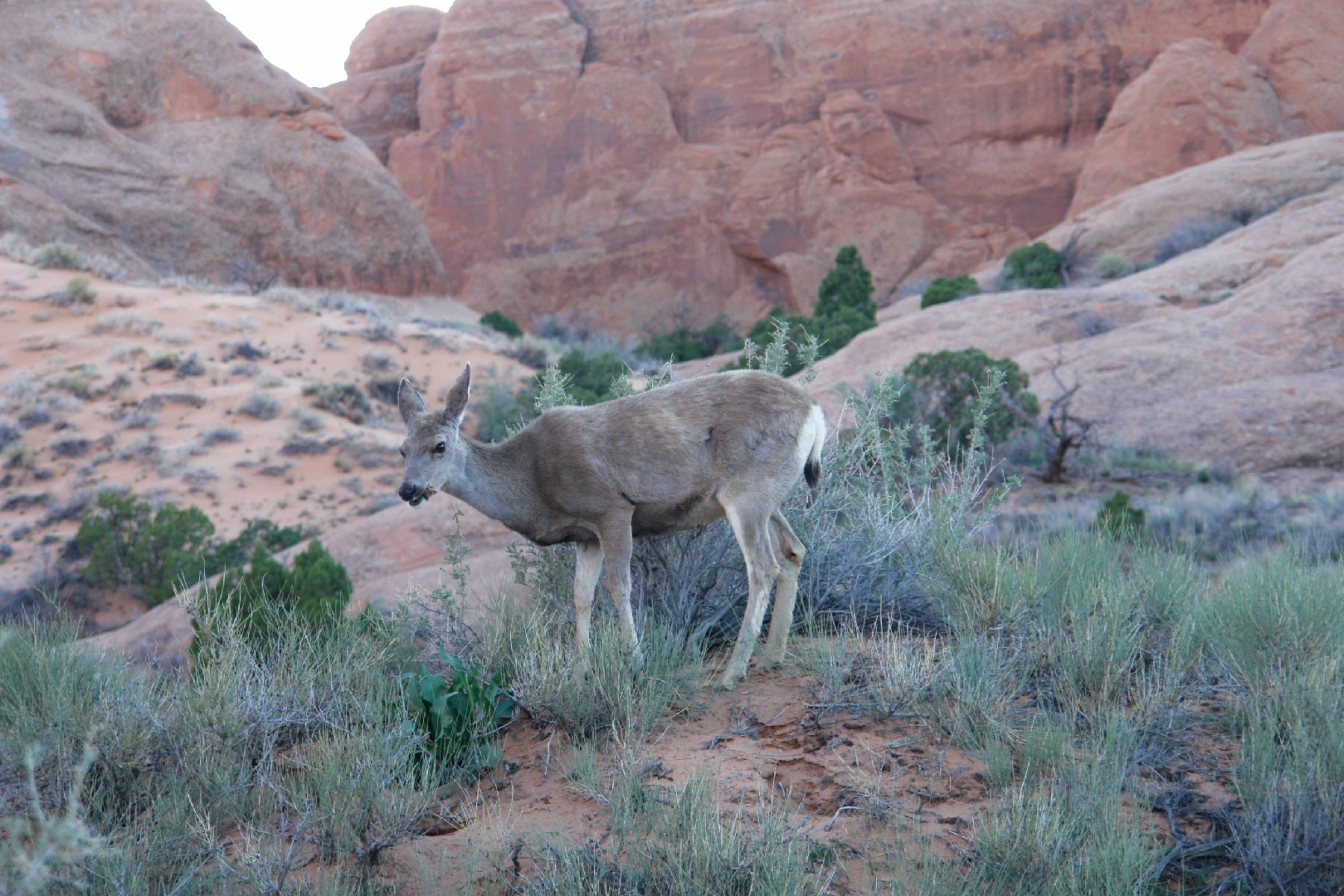Mule deer
A species of Hollow-tooth, Also known as Black-tailed deer, Columbian black-tailed deer, Rocky mountain mule deer Scientific name : Odocoileus hemionus Genus : Hollow-tooth
Mule deer, A species of Hollow-tooth
Also known as:
Black-tailed deer, Columbian black-tailed deer, Rocky mountain mule deer
Scientific name: Odocoileus hemionus
Genus: Hollow-tooth
Content
Description General Info
 Photo By Alex Proimos , used under CC-BY-2.0 /Cropped and compressed from original
Photo By Alex Proimos , used under CC-BY-2.0 /Cropped and compressed from original Description
The most noticeable differences between white-tailed and mule deer are the size of their ears, the color of their tails, and the configuration of their antlers. In many cases, body size is also a key difference. The mule deer's tail is black-tipped, whereas the whitetail's is not. Mule deer antlers are bifurcated; they "fork" as they grow, rather than branching from a single main beam, as is the case with white-tails. Each spring, a buck's antlers start to regrow almost immediately after the old antlers are shed. Shedding typically takes place in mid-February, with variations occurring by locale. Although capable of running, mule deer are often seen stotting (also called pronking), with all four feet coming down together. The mule deer is the larger of the two Odocoileus species on average, with a height of 80–106 cm (31–42 in) at the shoulders and a nose-to-tail length ranging from 1.2 to 2.1 m (3.9 to 6.9 ft). Of this, the tail may comprise 11.6 to 23 cm (4.6 to 9.1 in). Adult bucks normally weigh 55–150 kg (121–331 lb), averaging around 92 kg (203 lb), although trophy specimens may weigh up to 210 kg (460 lb). Does (female deer) are rather smaller and typically weigh from 43 to 90 kg (95 to 198 lb), with an average of around 68 kg (150 lb). Unlike the whitetail, the mule deer does not generally show marked size variation across its range, although environmental conditions can cause considerable weight fluctuations in any given population. An exception to this is the subspecies the Sitka deer (O. h. sitkensis). This race is markedly smaller than other mule deer, with an average weight of 54.5 kg (120 lb) and 36 kg (79 lb) in males and females, respectively. 
General Info
Lifespan
7-10 years
Diet
Mule deer is a ruminant herbivore, primarily consuming shrubs, trees' twigs and foliage. Its diet extends to berries, nuts, and succulent grasses in summer, preferring dead leaves and woody material during winter.
Appearance
Mule deer are medium-sized mammals with a streamlined body and short, dense fur. Their coat is typically a rich brown or greyish brown, lighter on the belly. Notably, these animals have large, mule-like ears and white rump patches. Males are distinguished by their forked antlers, which are shed annually. There's no significant variation in appearance between the different subspecies.
Behavior
Mule deer typically forages for grasses, herbs, and forbs with dawn and dusk being peak activity times. Primarily solitary, males display complex territorial behaviors during breeding season, specifically marking and defending territories to secure matings. This species exhibits migratory behavior based on seasonal changes and resource availability, crucial for its survival.
Population
Stable